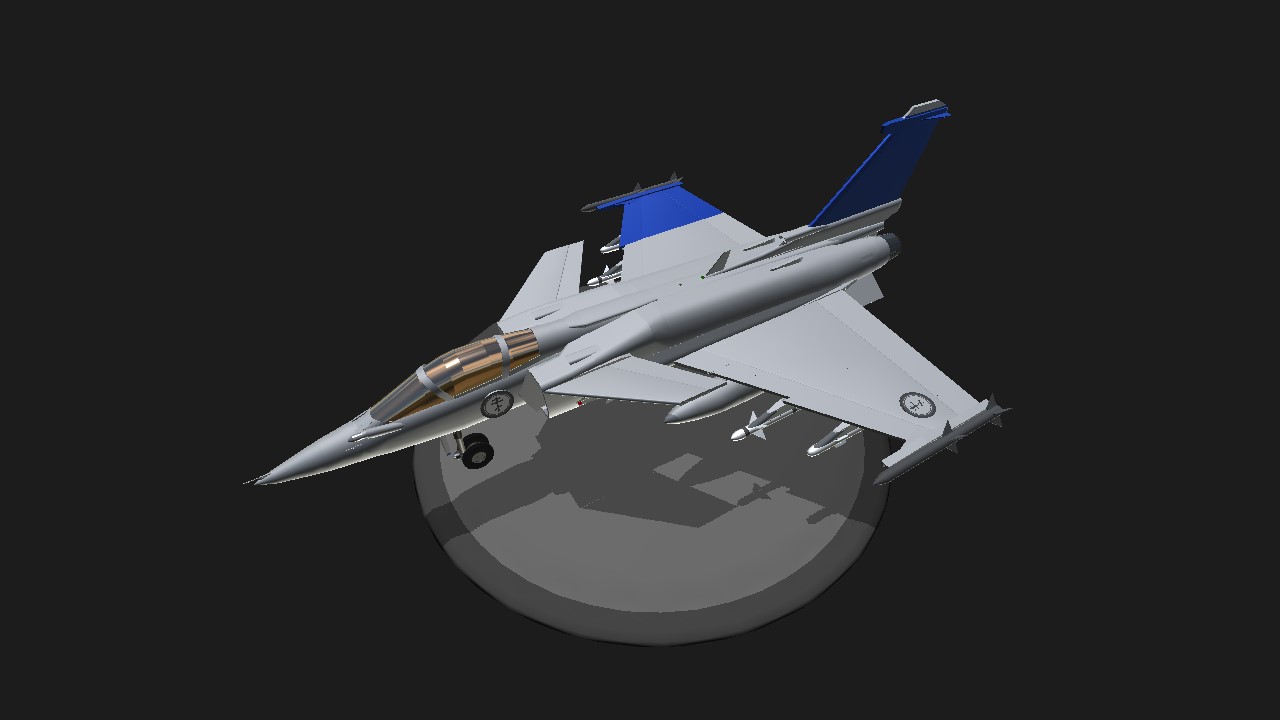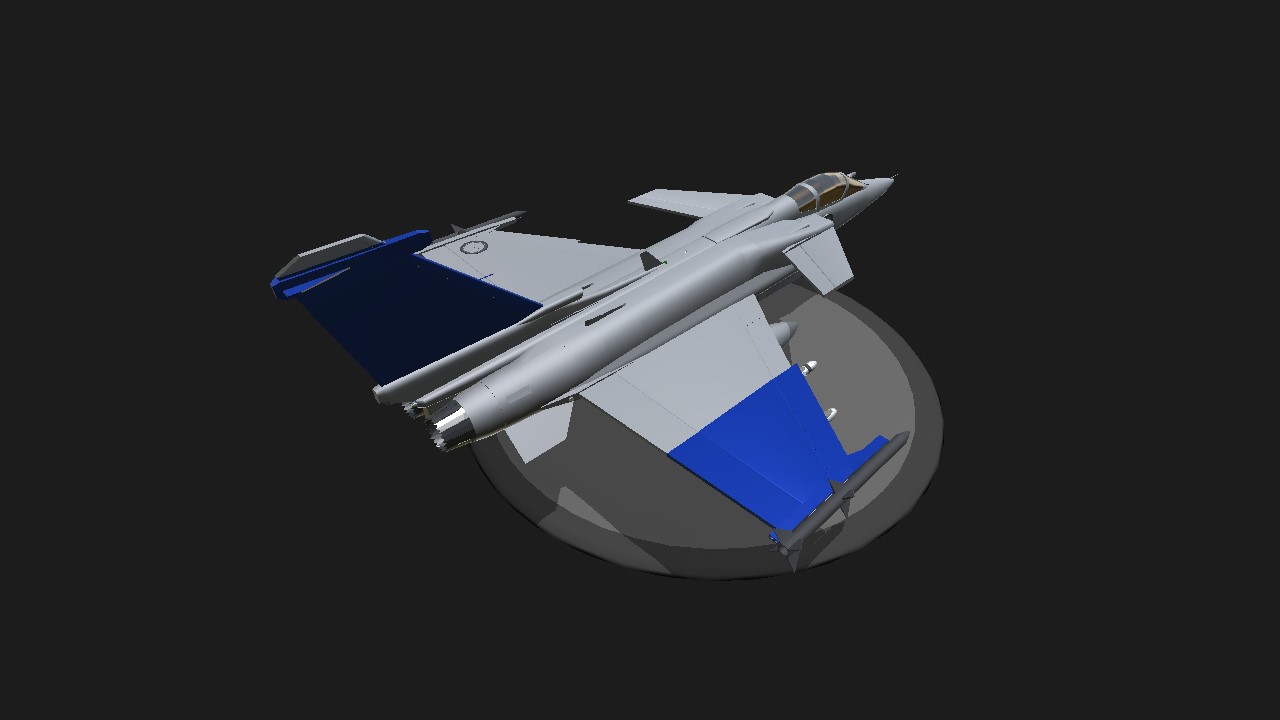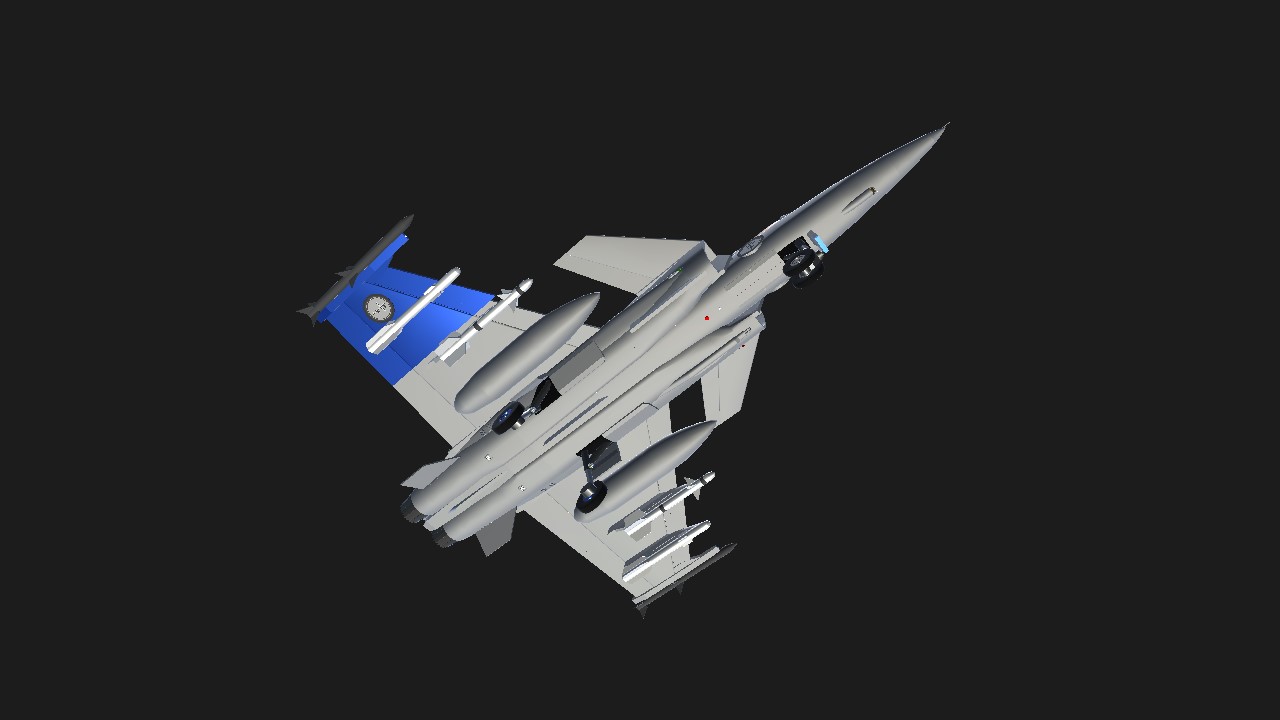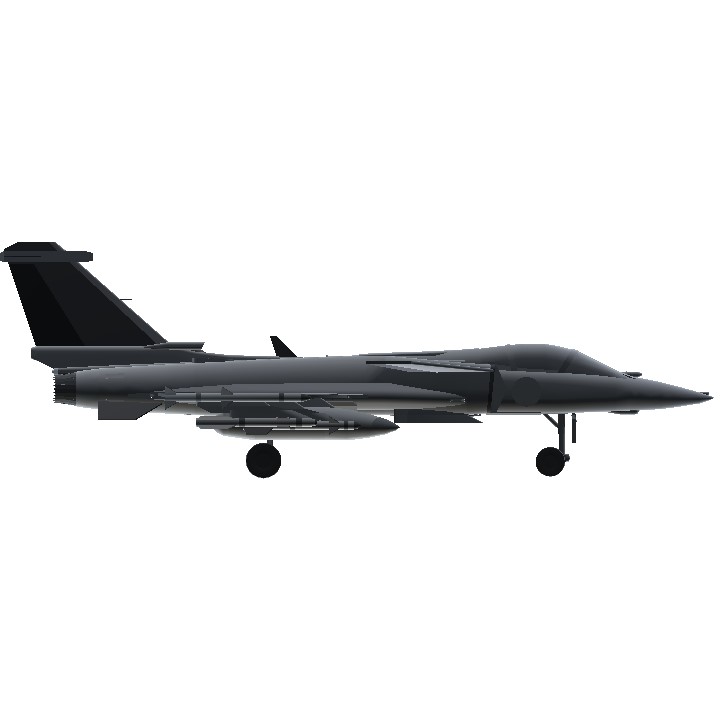

Technical Information
Manufacturer: Cormack Aerospace, Towa Technological Hills, Towa City, Principality of Tovansk, Fabella
Years of Development: 1990-1996
Year of Rollout: June 16, 1997
Desired Role: Multi-role, air superiority/supremacy fighter
Status: In service
Primary operators: Royal Fabellan Air Force / Air National Guard, Royal Lisean Air Force, Karyan Union Air Force Civil Reserve, Royal Odrasean Air Defense Force, and other more operators...
Produced: 1997-present (intial, then all variants)
Number built: 295+
Powerplant: Poyasakai Proteus 200-5C (military designation F200-5C)
Max Top Speed: 1670+mph (Mach 2.1), 1650+mph in supercruise
Brief Information
The Cormack MRF.70 (MAI designation: Gascogne, namesake MNF Gascogne) is a Fabellan twin-engine supersonic canard-delta wing multirole fighter aircraft. She is designed and developed by Cormack Aerospace in participation with Poyasakai and Matsuzaka Corporation, with help from Saab and her defense contractors.
Her design is loosely based off (or derived) from the real-world Saab JAS 39 Gripen, but with design changes and/or alterations, such as a twin-engine configuration and a strengthened landing gear structure. Such design artifacts with increased stability and high agility made dubbed the Gascogne "Gripen Two", or "Gripen's only better child". She is Cormack's first plane to be powered by two Poyasakai Proteus 200-5C afterburning turbofans, capable of supercruise and can reach to 1670+mph / Mach 2 speed.
She participated in dogfights during the Avgad Siege, and bombed each Satanist milita bases during the First and Second Modern Crusades, which made her "the most advanced Fabellan omni-role fighter". Only few were being shot down, but one MRF.70D from the 13th Fighter Wing performed a suicide attack on the back of the hijacked Valestian flagship carrier after launching an anti-ship missile aimed at the rear deck; the finishing attack is the fighter ramming against the stern deck full-speed, piercing through its structure, making it the first "very honorable death for Christ" due to the Honor Squadron's doctrine. The pilot, had to leave its partner behind...
An upgraded version, the MRF.70E/F will share elements from the Gripen E/F, with added advanced modifications and internals, and strike fighter capability. All production variants are currently in manufacturing process.
MRF.70 is nicknamed "Archangel" by the 13th Fighter Wing, due to its renowned agility and combat usage.
History
Development
The MRF.70's development started in post-Crusade era, 1990. Cormack gained help from Poyasakai (with PoiyaYudatsi and Matsuzaka), to develop a multi-role air superiority fighter fit for combat, to replace its aging fleet of Saab 37 Viggens in service. Cormack's own Type 81MRC Gallant, became the basis for their newer canard-delta fighter. This was known as the AFLF (Advanced Frontline Fighter) development phase, to adopt further technologies from other defense contractors.
Saab soon lent their tech to Cormack to aid in development with the MRF.70 fighter, for it to incorporate further technologies coming from the JAS 39 Gripen. Her design was then revised to have a sleeker profile, however she strikingly resembled the Gripen in terms of its inlet and curvature. The MAI approved its design for the MRF.70's prototype, which was named YMRF-60A AFLF Technology Demonstrator. The prototype made its maiden flight in May 4, 1992, and experienced no problems at all. More prototypes were done before MAI evaluations were being carried out; in 1994, it was approved to be in service with the Royal Fabellan Air Force.
She then entered service in 1997 as the MRF.70A/B (A for single seat, B for twin seat), originally for the Royal Fabellan Air Force and Air National Guard. All A/B variants in 1999 to present were then switched to C/D production variants, which are now known as export variants now and then. All Viggens that time were retired from service.
MRF.70C
Shown here is the MRF.70C, currently in service with Fabella, Odrasea, Lisea, and Harvea respectively. The C/D are most produced production variants incorporating advanced technologies available for its internals. The configuration as of this build is an air-to-air loadout.
Weapons:
2x ATAI-35 Bora LRAAM
2x ATA-60 Chrysalis AAM
2x Kaschal-60B MRAAM
1x dual-barrel 23mm Grzayev-Shipunov GSh-23
Gallery

Gascogne's canard-delta signature profile

Gascogne landing, with airbrakes and leading edge slats deployed

Full afterburner with Poyasakai Proteus 200-5C

Refueling probe extended

Gascogne with nose cone open, with the RSR-31 pulse-doppler radar.
Features and Controls
The Gascogne features funktree'd elevons and canard control surfaces. She also uses funktree codes on main boost engine (the BFE) to a specific speed for thrust, a custom afterburner by MIKEESE and gyroscope controls on AG4 (landing) and AG5 (for leveling).
Landing works as usual. Activate AG4 to deploy slats, raise inboard elevons by 4 degrees, and gyro leveling. Landing speed is 200mph-150mph descending, but make a feel when descending to ground by adjusting the engines bit by bit.
Activation Groups
AG2 for all weapons
AG3 to jettison fuel tanks
AG4 to deploy airbrakes and slats, with elevon and gyro controls
AG5 for airborne levelling
AG6 for refueling probe extension
AG7 to open nose cone
AG8 for supercruise
Side Notes
This is my first plane with wide Funky Trees use (landing gears, slats, elevons, and engines), and my first jet-powered supersonic fighter with reduced drag and mass on fuselage (new design doctrine), which made it maneuver nicely. Give me advice for the future, on what should I improve. Also, stay tuned that there will be variants for the MRF.70, even the MRF.70E/F. As always, stay safe and GOD BLESS YOU. Aim high, comrades! Nipah~
Specifications
Spotlights
- masotan15 5.3 years ago
General Characteristics
- Predecessor Cormack MRF.70C Gascogne
- Created On Android
- Wingspan 54.6ft (16.6m)
- Length 79.4ft (24.2m)
- Height 26.1ft (7.9m)
- Empty Weight 8,465lbs (3,839kg)
- Loaded Weight 42,516lbs (19,285kg)
Performance
- Power/Weight Ratio 5.074
- Wing Loading 46.0lbs/ft2 (224.7kg/m2)
- Wing Area 924.0ft2 (85.8m2)
- Drag Points 3149
Parts
- Number of Parts 486
- Control Surfaces 9
- Performance Cost 2,033







Upvote 18
@Evenstsrike333 ah yis
@MBR6753 NP!!!!!
Niceeeeeeeeeeeee
Boy :)
@KrAkenAtomic thaaaaanks
COOOOOL!!!!!!!!!!
@brians1209 The description. cuz Saab lent help to Cormack that time
Cool! Somehow it looks similar to the JAS-39
@KrAkenAtomic
@Hellosss38
@Emilydyer555
@AviownCorp
@Quackie
@masotan15